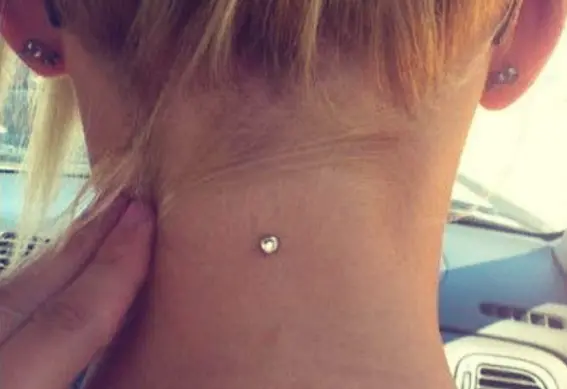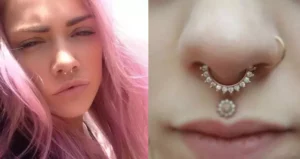One of the latest trends in body piercings is dermal piercings, also known as surface piercings. In this type of piercing, a needle or a dermal punch is used to punch out a tiny area of skin. Jewelry with an anchor is inserted directly and sits under the skin with the decorative piece on top of the skin. This can give the appearance of a floating piece of jewelry on the surface of the skin.
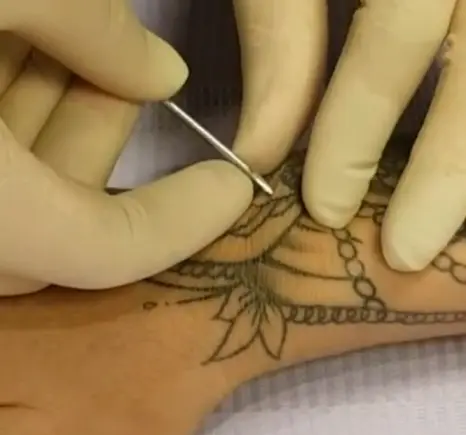
While dermal piercings can look very stylish and cool, they are not without risks. We’ll take a look at some of the pros and cons of dermal piercings, see how much a dermal piercing costs, and proper aftercare.
The Pros of Dermal Piercings
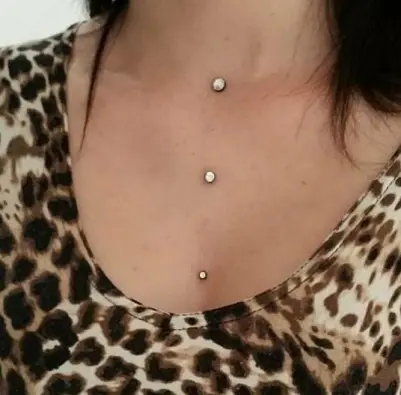
Less Painful Than Traditional Piercings
One of the biggest advantages of dermal piercings is that they are less painful than traditional piercings. This is because dermal piercings go through less tissue than other types of piercings. You may feel stinging from the needle, although most say the most pain comes from inserting the jewelry.
Heals Quickly
Another advantage of dermal piercings is that they tend to heal relatively quickly due to less tissue for the piercing to heal through. Traditional piercings can take 6 months to a year to fully heal. The pain and swelling on a dermal piercing should be pretty much gone after a week (although it is not completely healed for 2-3 months).
Versatile
Dermal piercings can be placed almost anywhere on the body, but are most commonly found on the the cheek, neck, and back. There are some more adventurous locations like the arms and thighs as well. So long as there is skin and a flat surface, you can pierce a dermal anywhere.
Easy to Hide
Dermal piercings can also be easily hidden if you need to for work or other reasons. Many dermals are in locations covered by clothing or are small enough where they’re barely noticeable. If you need to be discreet and can’t take out your dermal due to it still being in the healing process, you can insert a clear dermal piercing retainer (although it’s not recommended to change the jewelry until fully healed).
The Cons of Dermal Piercings
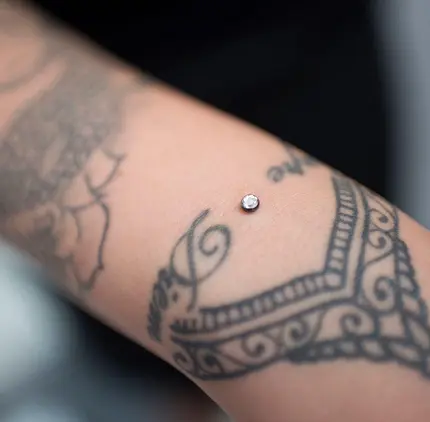
More Susceptible to Infection
This is because bacteria can easily enter the open wound and get trapped under the skin or on the jewelry. Additionally, infections can occur if the jewelry used in the piercing is not sterilized properly prior to insertion or without proper aftercare maintenance.
Tissue Damage
If a dermal piercing is not properly pierced, a common risk is tissue damage in the nerves and skin near the piercing site. This can lead to permanent scarring or a hypergranulation, an excess of granulation tissue that may leave a lump over the piercing site.
Migration and Rejection
Another con of dermal piercings is the higher risk of migration. Since dermal piercings are located beneath the surface of the skin, dermal piercings can occasionally migrate to another location or reject (when your body pushes the jewelry out from under your skin) all together.
How Long Does a Dermal Piercing Take To Heal?
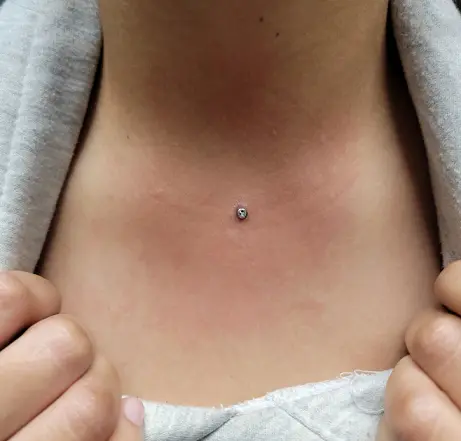
On average, it takes a dermal piercing 2-3 months to fully heal. It’s best to maintain proper aftercare and maintenance during the healing period to not delay the healing process. Your piercing may appear healed with no more crusting, swelling, or pain after a week but it is not recommended to change the jewelry until the tissue around the piercing is fully healed.
How Much Does a Dermal Piercing Cost

Prices will vary from shop to shop but you can generally expect a dermal piercing to cost between $70 to $125. That should include both piercing and jewelry.
Does a Dermal Piercing Hurt?
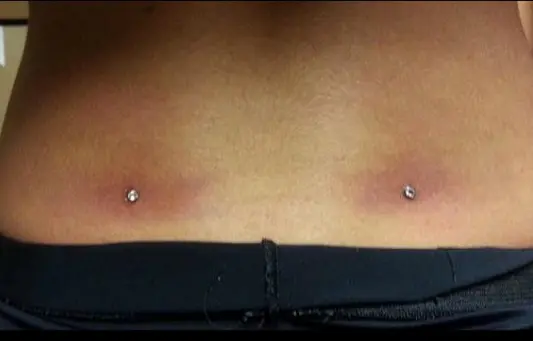
Pain levels can vary on a person’s individual pain tolerance but like all piercings, there will be a bit of pain. Areas with thinner skin like the chest or neck are said to be more painful while fleshier areas will hurt less. You can expect stinging from the actual piercing process and a bit of pressure and discomfort when the jewelry is inserted.
Does Sugar Cause Yeast Infections
Dermal Piercing Aftercare Tips
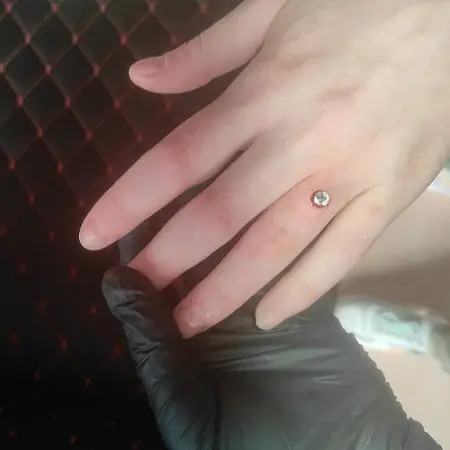
If you’ve decided that you want to get a dermal piercing, there are a few things you can do to ensure that it heals properly and doesn’t become infected:
- Clean your hands thoroughly before touching your piercing.
- Use water and sea salt or a saline solution to clean your dermal piercing.
- Clean your piercing two to three times per day until fully healed.
- Avoid using harsh chemicals or scrubs near your piercing (body wash, soap, lotions).
- Avoid twisting the jewelry when cleaning. Just clean the area and clear away any crust.
- Pat your piercing dry with a clean paper towel – don’t rub!
- Avoid touching or playing with your piercing as much as possible.
- Wait the full 2-3 months until your dermal piercing is fully healed to change the jewelry.
Read More:
- The Sexy, Rebellious Snake Bite Piercing: All You Need To Know
- Septum Piercings – Should You Get Yours Pierced?

